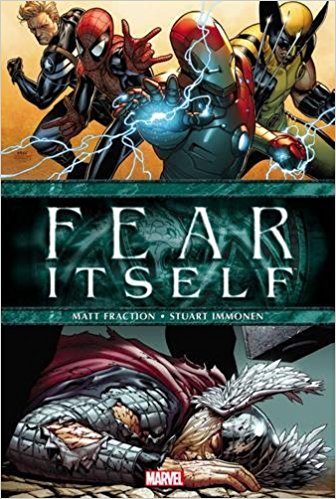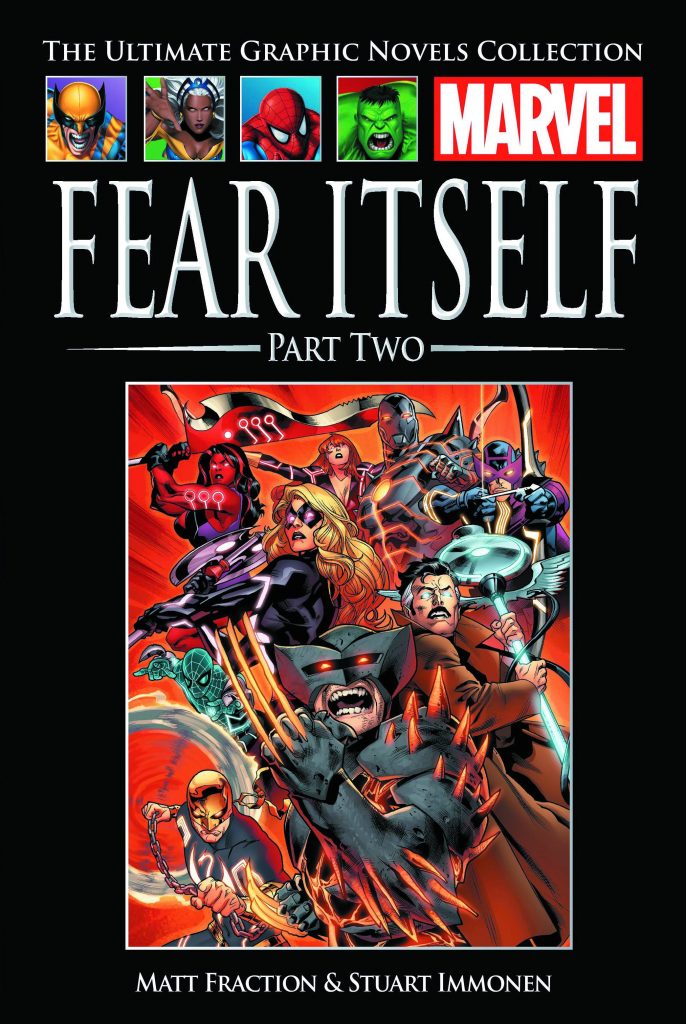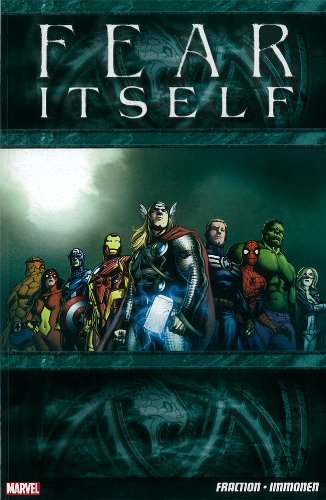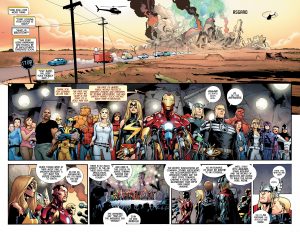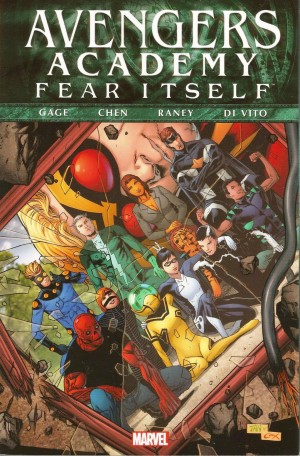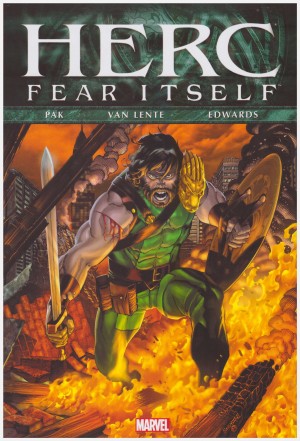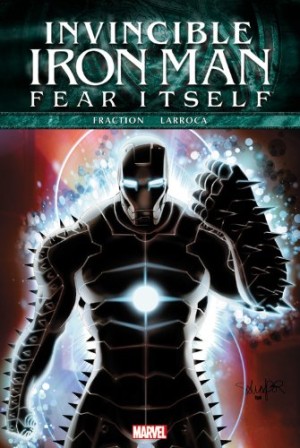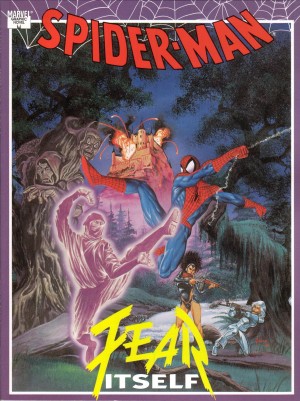Review by Frank Plowright
Spoilers in review
Fear Itself was the crossover that sprawled over the entire Marvel universe and into every one of their monthly comics in 2011, yet this core volume is relatively self-contained. A prelude chapter by Ed Brubaker and Scott Eaton shows the Red Skull tampering with extremely powerful forces during World War II, but its his daughter who manages to free an incredibly ancient evil, trapped centuries beforehand by Odin, ruler of the gods in Asgard. The Serpent in turn sends a number of hammers around the globe. Those who grasp them, are converted into beings of almost unimaginable strength, and their intentions toward humanity aren’t benign. Simultaneously the Red Skull’s daughter, now Skade, unleashes the entirety of her father’s hidden forces on the USA.
An oddity of the plot is that almost everyone who’s transformed by grasping one of the hammers is already a being of immense power. How much more powerful, for instance, can the Hulk become? Their minds are also twisted, so while the hammers might contribute visual imagery, they seem logically redundant. Those visual images are excellent throughout. The presence of Stuart Immonen as the artist raises Fear Itself several notches. Whether it’s a hero desperately trying to help humanity in the face of an unstoppable foe, or his picturesque locations, Immonen is the complete superhero artist combining power, grace and emotional depth with a fine sense of visual impact. He supplies several iconic posed images of the Avengers, and when sheer visceral excitement is needed over thirty pages for the finale, boy does Immonen deliver.
If only the equivalent could be said of the plot. It ties in with the work of Matt Fraction on The Mighty Thor, redefining what a pantheon of Norse gods means in the modern era. The Serpent is the Midgard Serpent of myth, and hundreds of thousands die in the conflicts he’s unleashed, somehow powering him, while in Asgard an imperious and short-tempered Odin stomps about like a bear with a thorn its paw. For the convenience of the plot he can’t be bothered explaining himself to anyone, so sows his own distrust. As this is an EVENT there has to be a cost, and whether of their own accord or editorial instruction it’s all too often the case that Marvel’s writers lack the imagination to define this by a method other than killing a superhero. Fraction’s no different and this time Winter Soldier (in Captain America’s costume) draws the short straw. Yet that’s not enough. After all the times this has occurred only for the allegedly dead hero return in a new series nine months later are any readers still fooled by this tawdry charade?
Given the basic premise has several flaws, it’s pleasing to note there are good aspects, but they’re in snippets, and seemingly often told elsewhere as this graphic novel primarily concerns blood and thunder. Both Iron Man and Captain America have good conversations with Odin, and returning throughout to Rick, a middle-aged father from Broxton is a nice touch. Overall, however, it’s only the art itself that makes Fear Itself worthwhile.
The epic is also available spread over two volumes of Hachette’s partwork series The Ultimate Graphic Novels Collection in the UK.
